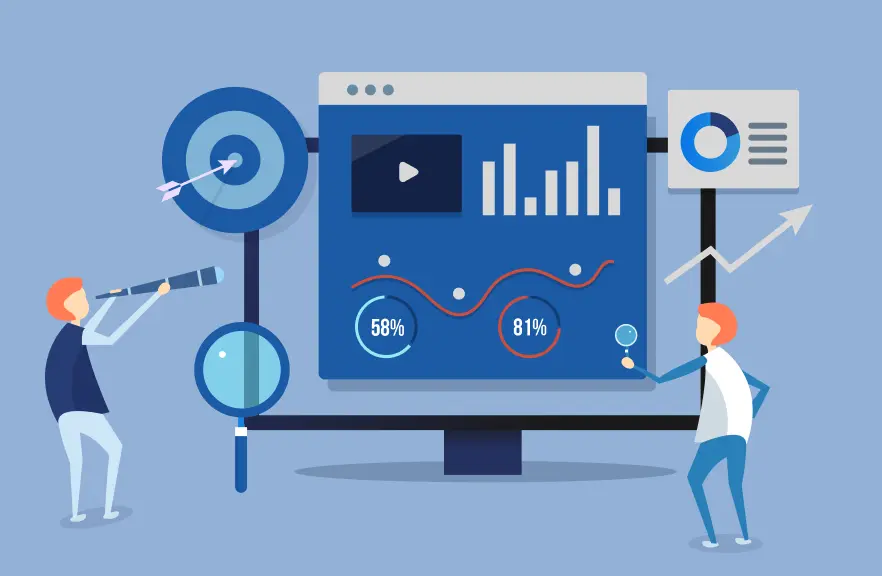In today’s business world, we understand the importance of making data-driven decisions. However, making the best use of data in time while making decisions is critical for institutional agility in subscription-based business entities. This is where real-time subscription analytics enters the picture.
Subscriptions are now more critical than ever in people’s lives.
To scale their businesses, e-commerce stores used to focus on one-time purchases. However, while consumer purchasing habits have shifted brands, customers are focusing on relationship-driven e-commerce and subscription analytics metrics is at the center of that shift.
Subscriptions are now the fastest-growing segment of e-commerce, with no signs of slowing down anytime soon. By 2025, the subscription economy is expected to be worth more than $1.5 trillion.
Related Blog: Can Automakers Learn to Love the Subscription Model?
Advantages of Including Subscription Analytics
Adding a subscription service is a great place to start if you want to increase your monthly sales and revenue. Subscription analytics presents an exciting opportunity for e-commerce stores to unlock potential revenue, develop long-term customer relationships, and foster a consumer community.
Using real-time subscription analytics enables your company to thrive and achieve peak productivity. With real-time data, you can reduce risks, cut costs, and learn more about your employees, customers, and the business’ overall financial health.
Data Visualization

Usually, historical data snapshots are easily available as static visual charts. With real-time analytics, you can create data visualizations that reflect changes in the business as they happen. This means that dashboards are always interactive and up to date. You can also easily share data with relevant stakeholders using custom dashboards, ensuring that decision-making is never stalled.
Competitive Advantage
Compared with a company that focuses on historical, stale data, your company can gain a competitive advantage by accessing real-time subscription analytics. You can easily understand benchmarks and view trends to make the best business decisions.
Precise Data and Personalized Insights
Subscription analytics is focused on producing results; there is no wasted effort. Rather than wasting resources, time, and money collecting unnecessary data, the software is designed to capture only the information you require.
Track Customer Behavior
If you have customer insights, you can delve deeper into customer behaviors and monitor what is and isn’t working to your business’ advantage to develop personalized approaches.
Lower Costs
Previously, big data required extensive mathematical knowledge and IT support. You can take advantage of subscription analytics with LatentView Analytics. This means you can reduce the costs of hiring coding experts to exploit business data and ensure team members have what they need to extract insights from the data.
Improve Decision-Making
Finally, one of the most significant advantages of subscription analytics is the ability to move forward on both small and large decisions in a timely and productive manner. With accurate insights, you can strip, update, and introduce new business ideas and processes to your organization with no risk because analytics provides you with all the information you need to make sound business decisions.
Subscriptions convert customers who already recognize your company’s value into devoted followers who become dependable sources of recurring revenue. The more time customers spend using your product or service, the more valuable they become. Furthermore, higher customer retention rates imply lower long-term acquisition costs.
Related Blog: Is Subscription Economy the Future of Gaming?
Important Subscription Analytics Metrics
Regarding the subscription economy, analytics is everything; let’s identify the key metrics that are all the more important.
The three most important metrics that indicate the performance, growth, and longevity of your store are:
- Average order value (AOV)
- Customer lifetime value (CLV)
- Churn
These metrics will guide your sales and marketing decisions and ultimately determine your business’s fate.
AOV
AOV measures sales trends and reflects customer behavior and purchasing preferences. This can be one of the most difficult metrics to improve. Increasing AOV is a top priority for e-commerce teams because it directly impacts profits (and CLV).
Upselling and cross-selling can increase order value, but there is a fine line between encouraging and annoying your customers.
Check your AOV by benchmarking your e-commerce business against thousands of other brands in your industry.
CLV
CLV is a “universal indicator” because it is a comprehensive metric that measures the overall health of your subscription store. CLV is the best churn predictor, profit forecaster, and decision-making.
Regarding marketing and sales decisions, CLV makes it simple to determine which products and channels are your best performers and bring you the most valuable customers.
Churn
Mainly, subscription stores live and die by churn — the rate at which subscribers stop subscribing to your store. Churn is the inverse of retention, indicating how many customers shopped with you but did not return.
Your churn rate is an essential indicator of the health of your subscription business, reflecting its long-term viability.
Related Blog: Are Personal Device Subscriptions Getting a Reboot?
Bottom Line
Subscription analytics can be used for a variety of purposes in almost all subscription-based businesses. Real-time data analytics is a requirement when running a business and keeping a finance team running at full capacity. Finance teams can use real-time data analytics for various purposes, including assessing how daily operations are performing, analyzing KPIs, and monitoring a company’s financial status.
LatentView Analytics can provide real-time subscription analytics metrics by gathering data from any source and transforming it into high-level insights based on data analysis. With this precise knowledge, business leaders can make quick decisions, cut costs, and increase efficiency.




